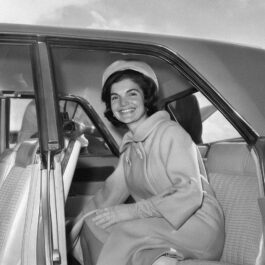This month marks 25 years since the release of Jurassic Park, Steven Spielberg’s seminal action-thriller about a theme park populated by genetically engineered dinosaurs, and the chaos that ensues when the park’s creators can’t contain their own main attraction.
Everyone can agree that cinema has evolved a lot over the last quarter of a century, but what many may not realise is that a number of the major developments can be traced back to this three-time Oscar winner – which was also the highest-grossing film of all time for several years. Here’s our verdict on the film’s biggest areas of impact…
The Evolution Of Hype
Inspired somewhat by the marketing campaign of Batman four years previously, Jurassic Park hype was inescapable in 1993. The success of the campaign combined saturation with secrecy – over 1,000 products were licensed (everything from computer games to toiletry kits!) so that the film’s iconic logo was everywhere, although the dinosaurs themselves were kept under wraps. Inspired by the success of his own film Jaws, which omitted the shark from advertising, most trailers kept audiences guessing what the ‘stars’ – such as Tyrannosaurus rex and raptors – would look like. It was a master stroke, with several films over the years making the most of that anticipation (JJ Abrams created a whole universe from it with 2008’s Cloverfield).
The Rebirth Of CGI
Arguably the movie’s biggest contribution to cinema, Jurassic Park wasn’t the first film to employ computer effects, but it was the first to make them seamless. Spielberg challenged effects house Industrial Light and Magic (ILM) to push to boundaries of what was possible, creating realistic digitally animated dinosaurs. Viewers believed they were seeing a dinosaur come to life, or watching Dr Alan Grant (Sam Neill) flee from a stampede of prehistoric beings. That sense of awe is key to the film’s mystique, and even 25 years on, the digital effects have aged surprisingly well. Think of the number of films you’ve seen recently that employ CGI; many of those would not exist had Jurassic Park’s technology not inspired a whole industry to move forward from practical effects.
Respecting The Past
Of course, there’s such a thing as too much technology. While the practical effects department were impressed by the digital effects (Grant’s famous line, “I think we’re out of a job,” was inspired by the team’s reaction to the first CGI dinosaur footage), animatronic dinosaurs played a big part in production and set the example for how to perfectly blend digital effects with traditional methods – something many soulless modern blockbusters could still learn. The centrepiece of this collaboration was the film’s memorable T-rex, a combination of digital effects and a full-sized animatronic replica that actors could interact with. The look of astonishment and intimidation on the actors’ faces was real!
The Mega-Blockbuster
Steven Spielberg had invented the concept of the summer blockbuster with 1975’s Jaws, and he would reinvent the genre nearly 20 years later. With Jurassic Park, the idea of a film that was bigger than anything you’d ever seen was now possible in a way it hadn’t been before. It has happened organically with Star Wars, but the notion of a movie as an all-consuming summer juggernaut was perfected by this adaptation of Michael Crichton’s book. Everything in the film’s promotion was part of the experience, leading you to believe you were attending the event of the summer. Nowadays, there’s an “event movie” practically every week of the year, with the Marvel and Star Wars universes pushing the envelope to try and create something you’ve never seen before, but for Jurassic Park, that wasn’t just spin.
Reviving The Monster Movie
After the mixed response to 1976’s remake of King Kong, giant monster movies were hard to find in 1980s Hollywood. While Aliens, Predators, Gremlins and The Thing were all terrifying in their own right, technological limitations prevented large-scale monsters from being created effectively for audiences at the time. Jurassic Park changed the game, taking the physical ordeal out of creating a giant beast and having it run amuck in a city. It inspired Roland Emmerich’s Godzilla, and arguably many of today’s biggest hits including Pacific Rim, Kong: Skull Island and Rampage.
Inspiring Future Classics
Interestingly enough, it wasn’t just monster movies that benefited from Jurassic Park’s influence, but also many of Spielberg’s contemporaries. Peter Jackson was a young breakthrough filmmaker at the time of the film’s release, and was inspired to realise his dream of creating The Lord Of The Rings trilogy just a few years later. In his final years, the great Stanley Kubrick also moved forward with the long-gestating A.I., which he eventually handed over to Spielberg and was released in 2001. Spielberg’s friend George Lucas was involved with the production through his ownership of ILM, and assisted Spielberg with post-production (rumours still persist that he also directed a couple of scenes). Impressed by what was possible, he was convinced to push forward with the Star Wars prequels, although some hard-core Star Wars fans may not thank Spielberg for that!
Scientific Inspiration
It may not astound you to find out that the science in Jurassic Park isn’t exactly correct. To this point, mankind has yet to find a way to bring back dinosaurs, and many of the creatures in the film were not what palaeontologists would call “accurate” – the fearsome velociraptors were much smaller in reality, while the actual T-rex could not move as fast as its movie counterpart – it’s classic “movie science”, and was given a quasi-explanation in Jurassic World, where Dr Wu (BD Wong) explained that species were tampered with for commercial reasons. Nevertheless, the film did inspire a boom in DNA research (something scientists refer to as “The Jurassic Park Era”) and increased interest in palaeontology that launched many prominent careers in the field. “Movie science”, as it turned out, had a lasting impact on real science.
The Cult of Jeff Goldblum
Curiously enough, the role that would make Jeff Goldblum a pop culture icon was arguably one of his smallest. Having been a leading man in the ‘80s with The Fly, the actor found his most iconic role in wise-cracking supporting character Dr Ian Malcolm. He proved to be the film’s secret weapon, with his pithy asides injecting humour into what’s ultimately a dark story (after being chased by a T-rex he quips, “Do you think they’ll have that on the tour?”). He also had the film’s finest (human) moment with his exquisite “Life Finds A Way” speech. 25 years on, the actor enjoys living legend status among pop culture fans, with Goldblum recently enjoying a renaissance in films like Isle of Dogs and Thor Ragnarok, as well as his return to the role of Dr Malcolm in Jurassic World: Forbidden Kingdom. Not bad for an actor who nearly lost the role to Jim Carrey!
Spielberg’s Finest Hours
While he has arguably made more cinematic films, Jurassic Park surely has to go down as the high point of Steven Spielberg’s career, marking the point where the director was at his most creative. Incredibly, Jurassic Park overlapped with his Oscar-winning Schindler’s List, with post-production on the former taking place at the same time as shooting began on the latter. The process took its toll on Spielberg, who would take a four-year hiatus from movie-making after the release of the films, but artistically it was worth the effort. Making two exceptional films is one thing, to do it at the same time is the mark of a master.














Sorry, the comment form is closed at this time.